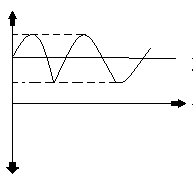This set of Engineering Materials & Metallurgy Multiple Choice Questions & Answers (MCQs) focuses on “Impact Tests on Metals, Fatigue Tests”.
1. The tendency of a ductile material to act as brittle is known as __________
a) Compaction
b) Brazing
c) Tempering
d) Notch sensitivity
View Answer
Explanation: Some ductile materials are likely to behave as a brittle material in the presence of notches. This behavior is termed as notch sensitivity of the material.
2. What is the V-notch angle found on an impact testing machine?
a) 30 degrees
b) 45 degrees
c) 60 degrees
d) 90 degrees
View Answer
Explanation: Both Izod and Charpy tests are conducted on the same machine with only a minor change. Both tests share the V-notch angle characteristic which is 45 degrees.
3. What is the size of the specimen used Charpy test?
a) 75*10*10
b) 75*5*5
c) 55*10*10
d) 55*5*5
View Answer
Explanation: Charpy and Izod are the two impact testing methods used for impact testing of materials. The Charpy test employs the usage of a test specimen of size 55 mm * 10 mm * 10 mm.
4. The specified fixed in the vise signifies a ________ form.
a) Cantilever
b) Fixed beam
c) Simply supported beam
d) Overhanging beam
View Answer
Explanation: Izod test uses a cantilever specimen of size 75*10*10 (mm) for impact testing. The specimen is placed in the vise such that it is a cantilever.
5. What is the depth of notch seen in impact testing methods?
a) 2 mm
b) 5 mm
c) 9 mm
d) 12 mm
View Answer
Explanation: Charpy and Izod are the two impact testing methods used for impact testing of materials. Both the methods share a V-notch angle of 45 degrees and the same depth of notch of 2 mm.
6. Which of the following is not applicable to fatigue fracture?
a) Loss of strength
b) Loss of ductility
c) Loss of electrical conductance
d) Uncertainty in strength and service life
View Answer
Explanation: Fatigue fracture is defined as the fracture that takes place under repeatedly applied fatigue stresses. It results in loss of strength, ductility, and increased underinsured strength and service life.
7. The fatigue fracture occurs __________
a) Below yield stress
b) Below tensile stress
c) At stress-strain point
d) Above tensile stress
View Answer
Explanation: Fatigue fracture is defined as the fracture that takes place under repeatedly applied fatigue stresses. It generally occurs at stress well below the tensile stress of the materials.
8. What kind of stress does this graph show?

a) Reversed stress
b) Fluctuating stress
c) Irregular stress
d) Constant stress
View Answer
Explanation: There are basically three kinds of stress cycles of fatigue loading. The graph in the question illustrates that of a fluctuating stress. Reversed stress is similar to fluctuating stress but it travels in both quadrants of the graph. Irregular stress is the third kind of stress cycle observed.
9. Fatigue of materials is characterized by ________ curve.
a) Hermite
b) Bezier
c) Wohner
d) S-T
View Answer
Explanation: In the case of high-cycle fatigue, a Wohner curve is used to depict its performance. This is also known as an S-N curve. This curve plots of the stress applied to the number of cycles till failure occurs.
10. How can the mean stress of fatigue be evaluated?
a) Pascal’s equation
b) Soderberg equation
c) Heisenberg’s equation
d) Goodman relation
View Answer
Explanation: The Goodman diagram is used to plot the mean stress against the alternating stress. This is used to show when a material fails under a number of cycles. This is also known as the Haigh diagram or Haigh-Soderberg diagram.
11. The stress below which the material does not fail is called _________
a) Fatigue stress
b) Endurance limit
c) Fatigue life
d) Total stress
View Answer
Explanation: Fatigue limit or endurance limit is defined as the value of stress below which the material does not fail even as it is loaded for an infinite number of cycles. The total number of cycles required to bring about the final fracture is called fatigue life.
Sanfoundry Global Education & Learning Series – Engineering Materials & Metallurgy.
To practice all areas of Engineering Materials & Metallurgy, here is complete set of 1000+ Multiple Choice Questions and Answers.
If you find a mistake in question / option / answer, kindly take a screenshot and email to [email protected]
- Check Engineering Materials Books
- Practice Metallurgical Engineering MCQs
- Apply for Metallurgical Engineering Internship
- Check Metallurgical Engineering Books
